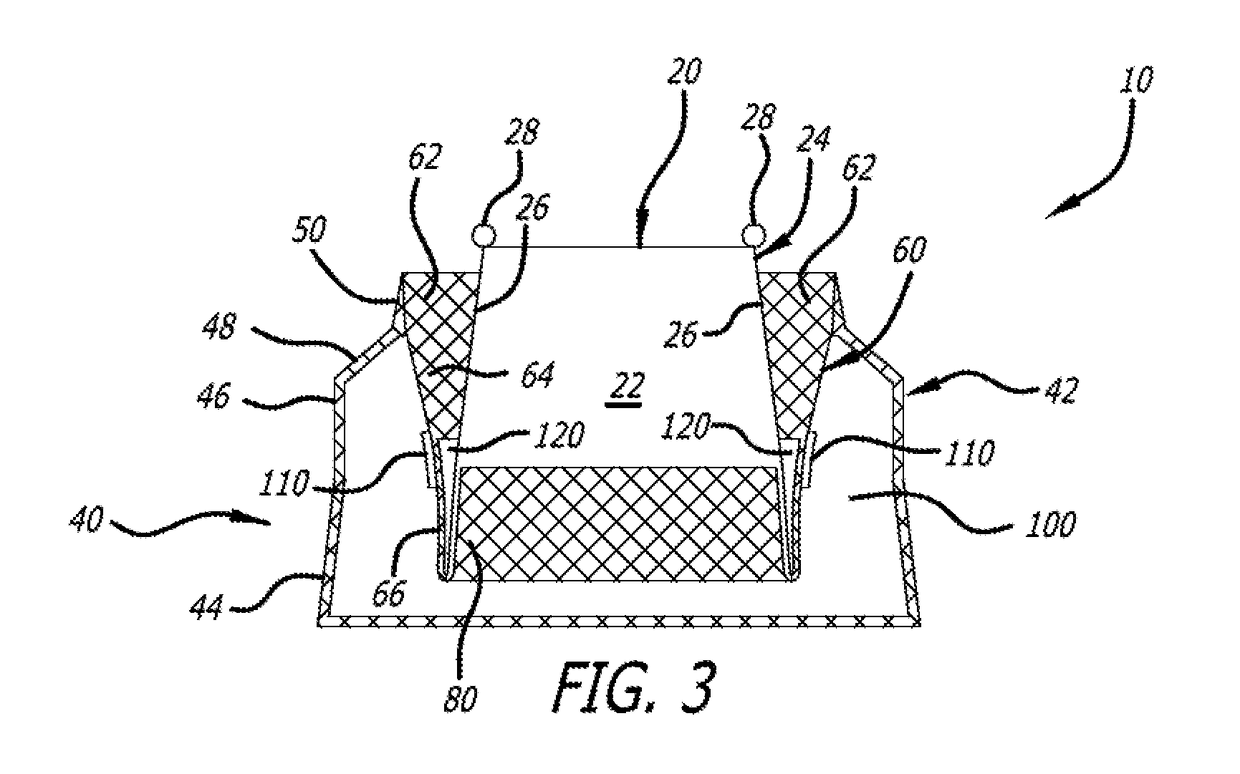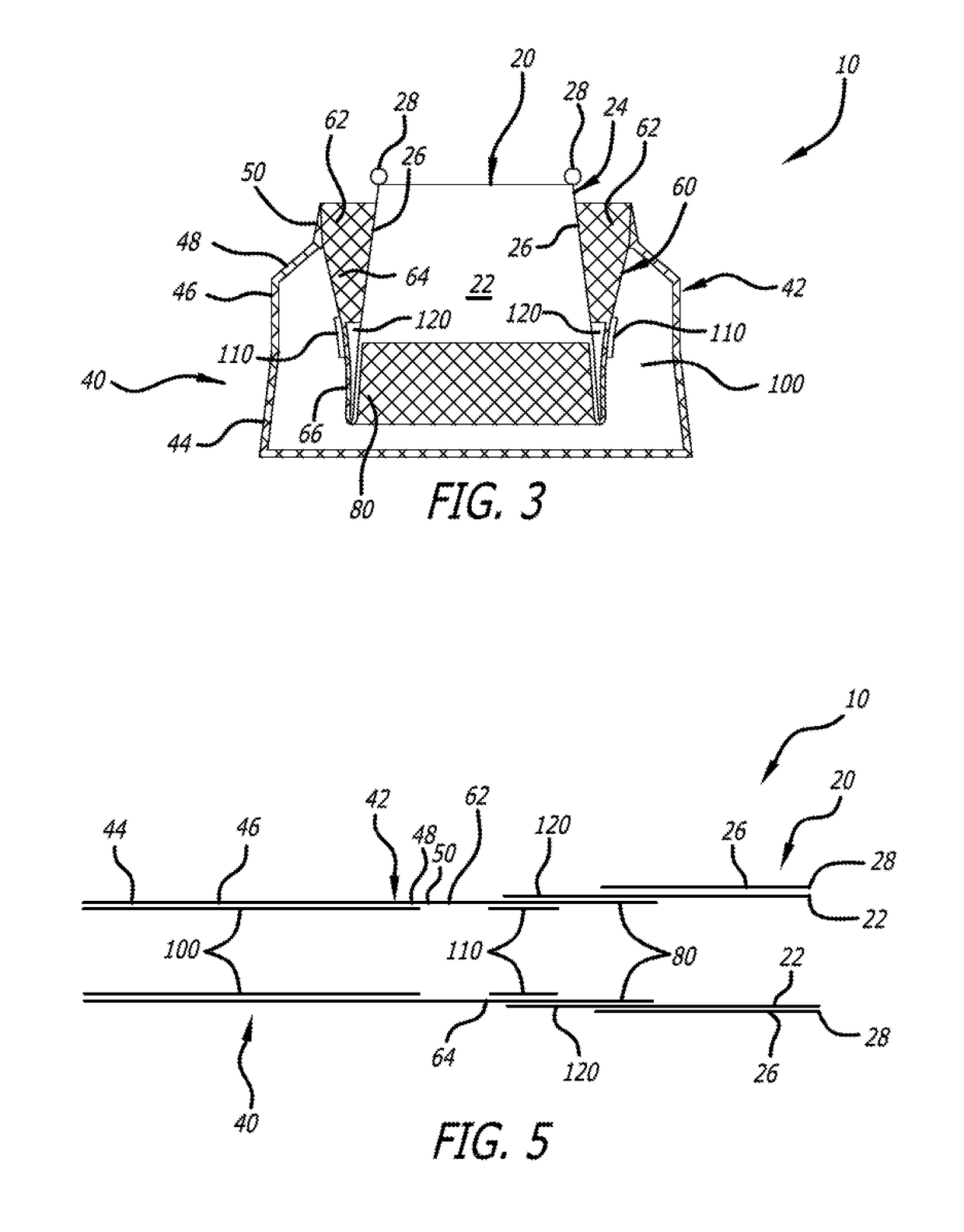Valve sealing tissue and mesh structure
a valve and mesh technology, applied in the field of valve sealing tissue and mesh structure, can solve the problems of paravalvular leakage and rise of prosthetic valves, and achieve the effect of reducing paravalvular leakage and reducing leakag
- Summary
- Abstract
- Description
- Claims
- Application Information
AI Technical Summary
Benefits of technology
Problems solved by technology
Method used
Image
Examples
first embodiment
[0035]Paravalvular leakage is prevented, in part, by strategic placement of material on the various section of the support structure 40. In a first embodiment, shown in FIG. 3, includes three protective liners. An outer liner 100 is sewn into the inside surface of the outer layer 42. Specifically, the outer liner 100 spans the flared section 44 and may extend up into the upright section 46 and tapered section 48. All of the liners described herein are preferably circumferential. Non-limiting examples of tissue liner materials include: bio-expandable materials, impermeable fabric, compliant polymers, molded polymers, and hydrogels. It has been found that an impermeable tissue liner performs superiorly in comparison to a woven polyester liner by preventing blood flow through the outer layer 42 of the support structure 40. Furthermore, in all embodiments, fabric may be adhered to the tissue liners to encourage further ingrowth of native tissue.
[0036]The outer tissue liner 100 is attach...
second embodiment
[0041]In a second embodiment, shown in FIG. 4, the extra material of the valve leaflets 22, forming the inner liner 120, is routed to an inside surface of the inner layer 80, and wraps around the third folded section 66 of the middle layer 60.
[0042]Each of the embodiments of the device 10 described herein has a delivery configuration and a deployed configuration. In the delivery configuration, the folds are straightened and the mesh support structure is in the form of an elongated tube. The liners are attached to the support structure such that, upon folding, the liners are appropriately placed.
[0043]The delivery configuration of the embodiment of FIG. 3 is shown in FIG. 5. FIG. 5 shows that in the delivery configuration, support structure 40 is a continuous tube that includes layers 42, 60 and 80. When extended the order, moving from left to right as shown, of the various sections and layers becomes outer layer 42, with sections 44, 46, 48 and 50. Liner 100 is contained within the ...
PUM
 Login to View More
Login to View More Abstract
Description
Claims
Application Information
 Login to View More
Login to View More - R&D
- Intellectual Property
- Life Sciences
- Materials
- Tech Scout
- Unparalleled Data Quality
- Higher Quality Content
- 60% Fewer Hallucinations
Browse by: Latest US Patents, China's latest patents, Technical Efficacy Thesaurus, Application Domain, Technology Topic, Popular Technical Reports.
© 2025 PatSnap. All rights reserved.Legal|Privacy policy|Modern Slavery Act Transparency Statement|Sitemap|About US| Contact US: help@patsnap.com



